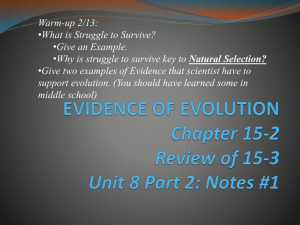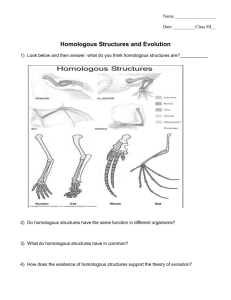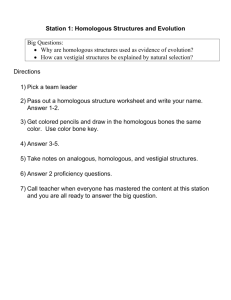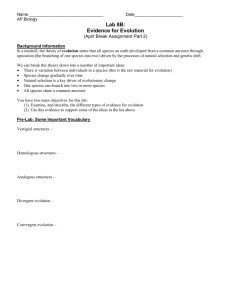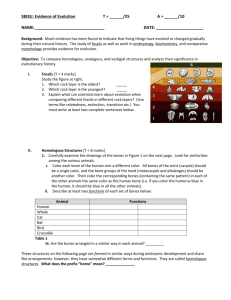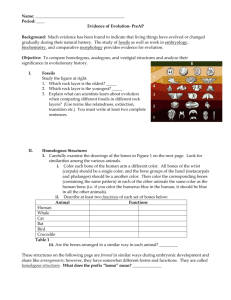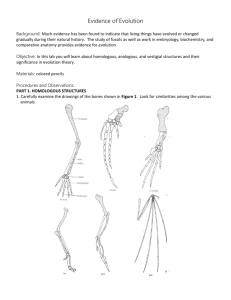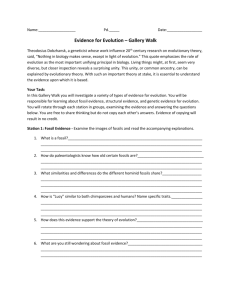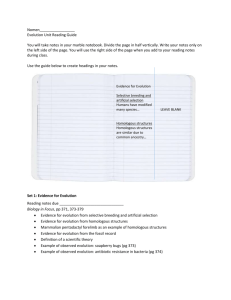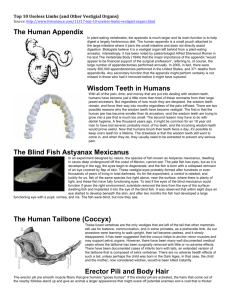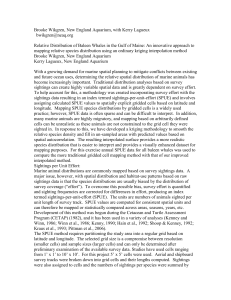Evidence of Change: Homologous Body Structures
advertisement
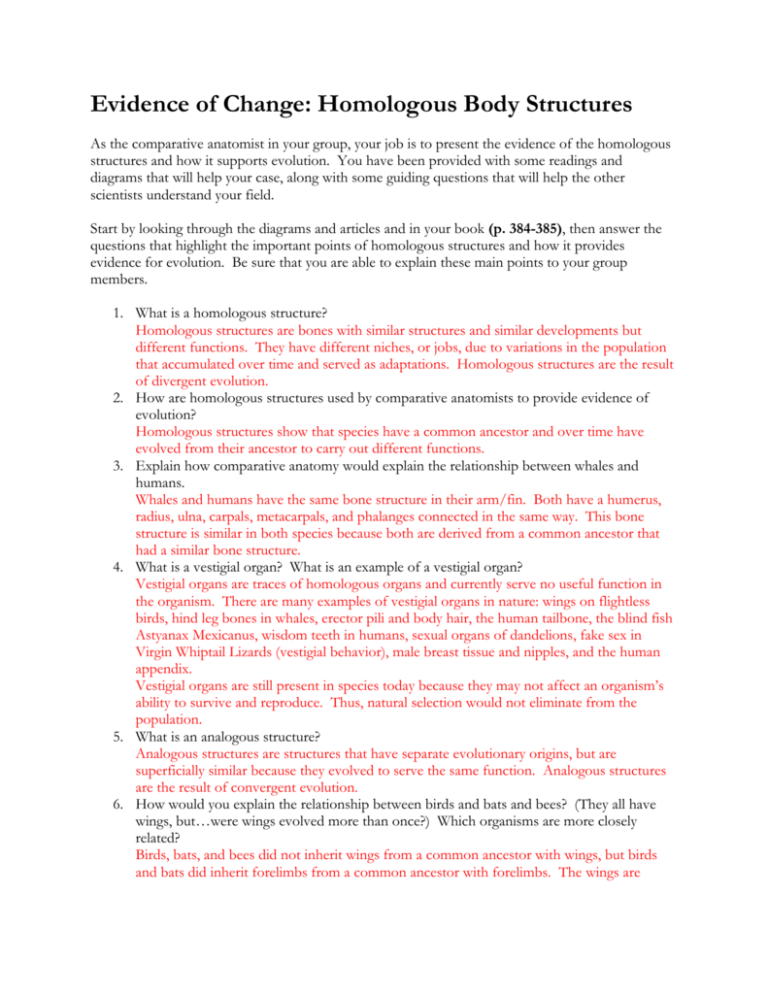
Evidence of Change: Homologous Body Structures As the comparative anatomist in your group, your job is to present the evidence of the homologous structures and how it supports evolution. You have been provided with some readings and diagrams that will help your case, along with some guiding questions that will help the other scientists understand your field. Start by looking through the diagrams and articles and in your book (p. 384-385), then answer the questions that highlight the important points of homologous structures and how it provides evidence for evolution. Be sure that you are able to explain these main points to your group members. 1. What is a homologous structure? Homologous structures are bones with similar structures and similar developments but different functions. They have different niches, or jobs, due to variations in the population that accumulated over time and served as adaptations. Homologous structures are the result of divergent evolution. 2. How are homologous structures used by comparative anatomists to provide evidence of evolution? Homologous structures show that species have a common ancestor and over time have evolved from their ancestor to carry out different functions. 3. Explain how comparative anatomy would explain the relationship between whales and humans. Whales and humans have the same bone structure in their arm/fin. Both have a humerus, radius, ulna, carpals, metacarpals, and phalanges connected in the same way. This bone structure is similar in both species because both are derived from a common ancestor that had a similar bone structure. 4. What is a vestigial organ? What is an example of a vestigial organ? Vestigial organs are traces of homologous organs and currently serve no useful function in the organism. There are many examples of vestigial organs in nature: wings on flightless birds, hind leg bones in whales, erector pili and body hair, the human tailbone, the blind fish Astyanax Mexicanus, wisdom teeth in humans, sexual organs of dandelions, fake sex in Virgin Whiptail Lizards (vestigial behavior), male breast tissue and nipples, and the human appendix. Vestigial organs are still present in species today because they may not affect an organism’s ability to survive and reproduce. Thus, natural selection would not eliminate from the population. 5. What is an analogous structure? Analogous structures are structures that have separate evolutionary origins, but are superficially similar because they evolved to serve the same function. Analogous structures are the result of convergent evolution. 6. How would you explain the relationship between birds and bats and bees? (They all have wings, but…were wings evolved more than once?) Which organisms are more closely related? Birds, bats, and bees did not inherit wings from a common ancestor with wings, but birds and bats did inherit forelimbs from a common ancestor with forelimbs. The wings are analogous structures, so they cannot be used to determine how closely related the species are to one another. 7. What evidence is there that connects baleen whales to other toothed whales and mammals? Hypothesize as to why baleen whales don’t have teeth in their adult stage of life. Baleen whales possess teeth in the early fetal stage and lose them before birth. The possession of teeth in fetal baleen whales provides evidence of common ancestry with toothed whales and other mammals. In addition, ancient baleen whales bore a full set of teeth.
